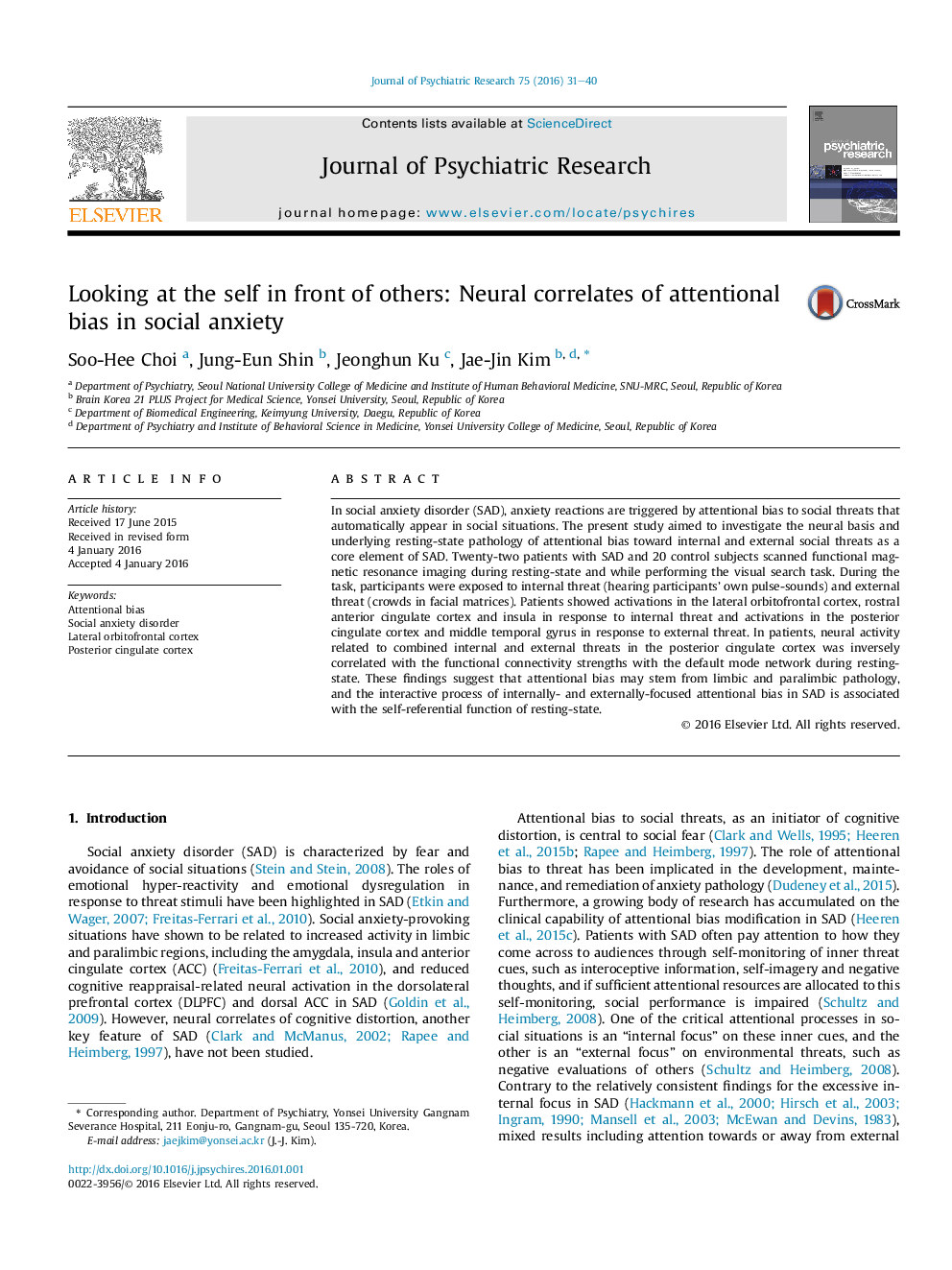| Article ID | Journal | Published Year | Pages | File Type |
|---|---|---|---|---|
| 327541 | Journal of Psychiatric Research | 2016 | 10 Pages |
•Social anxiety is triggered by attentional bias to internal and external social threats.•Neural basis of attentional bias toward social threats was investigated using fMRI.•Attentional bias may stem from limbic and paralimbic pathology.•Interaction between attentional biases is associated with resting self-referential function.
In social anxiety disorder (SAD), anxiety reactions are triggered by attentional bias to social threats that automatically appear in social situations. The present study aimed to investigate the neural basis and underlying resting-state pathology of attentional bias toward internal and external social threats as a core element of SAD. Twenty-two patients with SAD and 20 control subjects scanned functional magnetic resonance imaging during resting-state and while performing the visual search task. During the task, participants were exposed to internal threat (hearing participants’ own pulse-sounds) and external threat (crowds in facial matrices). Patients showed activations in the lateral orbitofrontal cortex, rostral anterior cingulate cortex and insula in response to internal threat and activations in the posterior cingulate cortex and middle temporal gyrus in response to external threat. In patients, neural activity related to combined internal and external threats in the posterior cingulate cortex was inversely correlated with the functional connectivity strengths with the default mode network during resting-state. These findings suggest that attentional bias may stem from limbic and paralimbic pathology, and the interactive process of internally- and externally-focused attentional bias in SAD is associated with the self-referential function of resting-state.
